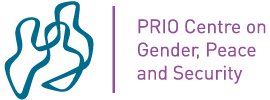The primary objective of the project is, through evidence-based research, to improve our understanding of dynamics of the use of sexual violence in conflict settings, and to contribute to develop improved methodologies for documenting and analyzing sexual violence and to identify the most effective strategies to reduce or eliminate the use of conflict-related sexual violence.
Secondary objectives
- Addressing data and reporting biases through advanced source triangulation and development of automated coding procedures;
- Developing a strong international and national research network on conflict-related sexual violence;
- Engaging local, regional and international policy actors and advocacy groups in discussing approaches, research results and policy responses to conflict-related sexual violence prevention, and
- Contributing to promote female staff at senior levels by supporting the career and building professorship competence of a female research talent.
Project summary
The purpose of this project is to address why sexual violence occurs during conflict and what might be done to reduce or eliminate it. We will focus on tackling the main challenges facing the literature on conflict-related sexual violence:
The most basic challenge is methodological - how to establish reliable systematic evidence and to overcome problems of potential data biases on sexual violence in contentious settings. Reporting biases can occur i.a. due to sexual violence being fraught with taboos, the conflict contexts in the violence occurs, and the phenomenon being potentially overlooked and discounted. We will therefore map (RQ1) which data generation biases exist, how do they potentially skew our results, and how can they be overcome?
The second challenge is substantive - the lack of understanding of the relationships between different forms of sexual violence and other parts of the repertoire of behaviors in contentious settings. Sexual violence is generally studied in isolation or as an aggregate category, although there can be important dynamics between different contentious repertoires and the different forms of sexual violence (e.g. rape, sexual slavery, sexual torture) might have both different causes and consequences.
We therefore ask: (RQ2) what is the strategic relevance and function of different forms of sexual violence in contentious politics? Based on this and the organizational, ideational, and other characteristics of perpetrator groups, we are able to ask the critical question of: (RQ3) which interventions and/or policies will significantly reduce or eliminate the use of sexual violence atrocities?
The answers to these three related questions will be sought through intensive data triangulation, cross-case comparative analyses using advanced statistical techniques, as well as in-depth micro-level studies. It will be critical to advancing the understanding and possible prevention of this heinous war crime.











